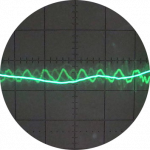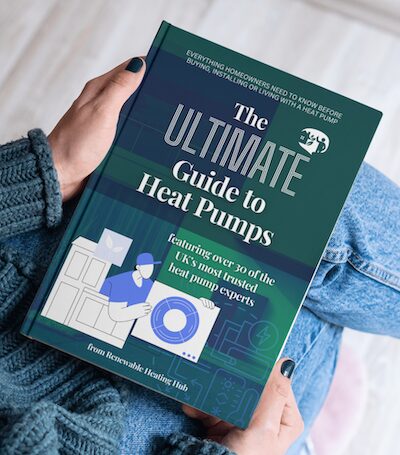Totally bewildered with my ECO4 heat pump installation
Hi, I’ve just joined this forum and feel like a rabbit staring at the headlights of truck..
Long story but because of a medical condition I was awarded an Eco4 grant in September ‘24. An ASHP and solar panels were installed in October to replace oil boiler. I’m completely bewildered and have no clue what I’m doing with the system. My electricity bill has sky rocketed and quite frankly I’m scared, and cold.
The installers have been less than helpful. I really don’t know what to do and am seriously considering having the whole system taken out.
To those people here who have had to part with their own, hard earned cash to pay for their renewables, I sincerely apologise for moaning. I wish I could be grateful and satisfied with the new system, that has cost me no £££ to install, but which has left me stressed, colder and poorer than I was before it was installed.
I really hope to learn how to use it properly and am very relieved to have found this hub. Will be looking for tips and suggestions and would be grateful for any advice offered.
thanks! 🙏
Posted by: @jaynieqWill be looking for tips and suggestions and would be grateful for any advice offered.
We'll do what we can, but first we need more information.
Rough location and type of property.
Your property's heat loss. It's a figure in kW that says how much heat your property loses at design temperatures. If you don't already have it, get it now from your installer. If they refuse, that is a major red flag.
Size and type of your heat pump and solar installation.
Midea 14kW (for now...) ASHP heating both building and DHW
@cathoderay thank you for your response.
North Cumbria - sandstone cottage C1850
Heat loss -
Area M2 132.14
Power W 11465
Energy kWh 26180
ASHP - Vaillant Arotherm plus 1200
Solar - Solar Edge 23 units x SPV370 - estimated annual output 903 kWh
I’m unsure about the solar stats - please correct me if it’s total garbage.
@jaynieq - we have similar properties (old sandstone cottages), though I am in the South so maybe a bit milder.
I take it the Power W 11465 is your heat loss. This is normally expressed (as you have) in the mildly confusing units of Watts (or kW) which are units of power (ability to do work, even if none is actually done, eg a 3kW kettle that is not actually doing anything is still a 3kW kettle), when what a building actually looses (and therefore needs to have replaced to stay warm) is energy, for which the units are kWh. The two are closely related: 1kW of power for an hour uses 1kWh of energy, power x time = energy. It is energy (kWh) that you will see on your bill, and what costs the money. I mention the distinction because it is all to easy to get confused between the two. Was this heat loss worked out by calculation ie measuring the various rooms and then summing all the heat losses to get a total figure? This is usually done using a pro-forma spreadsheet.
I am not sure what the Energy kWh 26180 is. The units are right (energy - kWh) but it is quite a large figure. Perhaps it is one of those bizarre numbers you find on EPCs (certificates which are generally only good for lighting fires with, only they don't come in paper form anymore). Can you elaborate on where that number comes from?
I take it the Vaillant Arotherm plus 1200 is a 12kW model, in which case it is a reasonable on the face of it match to your heat loss. I say on the face of it because calculated heat losses can, particularly in old buildings like ours, over-estimate the actual heat loss. This is a complicated area that is not for Day One. The key point at the moment is you should have enough power to match your heat loss.
Next we need to know your heat emitters, radiators as I suspect, or underfloor or a mixture of both? If they are rads have they been upgraded, as heat pumps, because they run at lower temps, need larger radiators to transfer the heat to the rooms? Lastly, how are you currently running the system? On weather compensation, where the heat pump output is controlled by the outside air temperature, and is usually always on, or by thermostats and/or timers?
The solar side I will leave to someone else more qualified than me (there are plenty here on the forum, sooner or later one of them will chip in).
Midea 14kW (for now...) ASHP heating both building and DHW
Thank you again @cathoderay - your detailed response has made me realise how little I know!
The heat loss figure came from a spreadsheet provided by our installer. I will go back to it to see if I can make sense of it.
Our heat emitters are radiators only, larger than our originals and installed as part of the grant package. They are each controlled by a Radbot.
As far as operating the system, because I know no better (an embarrassing fact that I’m determined to change) it’s used like the oil boiler it has replaced.. I try to keep use to a minimum and have it ticking over at 18 degrees from 8am to 4pm, when the log burner takes over to heat the living room and downstairs rooms. After a particularly expensive week I turned off the hot water altogether, as we have electric shower, dishwasher etc. Since reading some of the articles here, I realise that’s probably the worst thing to do and have promptly turned it back on for 2 hours, twice a day. This week’s electricity usage is mind boggling, likely to be £50+ which is unsustainable for me.
The cottage has no insulation other than double glazing and loft insulation, so the house cools fairly rapidly.
I do realise I had the installation at the start of the most energy-hungry time of year, and that I should start to see savings come the spring.
@cathoderay I guess it’s the price to pay for living in a property full of character …
@cathoderay sorry, also forgot to mention that I’d never heard of weather compensation until I arrived at this forum. Still not completely sure what it means! We currently operate the system via timer and thermostat.
@jaynieq - you are clearly beginning to get an idea of how these things are supposed to work. To go through some of your replies:
Posted by: @jaynieqThe heat loss figure came from a spreadsheet provided by our installer. I will go back to it to see if I can make sense of it.
Our heat emitters are radiators only, larger than our originals and installed as part of the grant package. They are each controlled by a Radbot.
It is enough for now to know that the heat loss came from a spreadsheet. These are notorious for over-estimating the heat loss, especially for older non-standard building like ours. For example, my calculated heat loss using a standard spreadsheet is about 12kW, whereas my measured heat loss is nearer 9kW - quite a difference. Having larger radiators fitted is also a good thing, as long as the replacement really are large enough, As a very rough rule of thumb, rads for a heat pump system will need to be twice the size of those needed for a fossil fuel system. This is because the mean radiator temp is lower, to compensate, you need a larger radiator area. The radbots - turn them off! Make them fully open/on all the time - the control comes from the weather compensation curve, not thermostats, which in effect end up fighting the heat pump.
Posted by: @jaynieqAs far as operating the system, because I know no better (an embarrassing fact that I’m determined to change) it’s used like the oil boiler it has replaced.. I try to keep use to a minimum and have it ticking over at 18 degrees from 8am to 4pm, when the log burner takes over to heat the living room and downstairs rooms. After a particularly expensive week I turned off the hot water altogether, as we have electric shower, dishwasher etc. Since reading some of the articles here, I realise that’s probably the worst thing to do and have promptly turned it back on for 2 hours, twice a day. This week’s electricity usage is mind boggling, likely to be £50+ which is unsustainable for me.
You are getting the right idea from your reading. This (2 hours twice a day) is going to cost a lot for what it is, and not achieve very much. The problem is heat pumps are hopeless at recovering from setbacks and off periods, so you don't get warm, and because of the underlying physics, you don't save much money unless you are prepared to shiver your way through winter, which none of us want to do, and if you have an underlying medical condition (depending on what it is) it may be an ill-advised, or even very ill-advised thing to do. Depending on how you use your hot water, it may still be better to use the heat pump to heat it, as it is about three times more efficient than direct hot water heating. It does depend though on usages as I say, because if you heat a tank, it loses heat (even modern well insulated ones do) but at the same time that lost hot water heat probably ends up inside your house, so it is not completely lost.
Can I suggest you find out how to run the heat pump in weather compensation mode, and give it a trial? Remember, this means no room/radiator thermostat control at all (set them very high, so they are always on, always calling for heat). If you can't work out from what you have how to set up and turn on weather compensation, ask your installer. It doesn't do any harm to remind them you have a medical condition, it might concentrate their minds a bit. As always, monitor your kWh usage, so you can see what actually happens.
Posted by: @jaynieqThe cottage has no insulation other than double glazing and loft insulation, so the house cools fairly rapidly.
It may in fact do the opposite (mine does), because of something called thermal mass. When you heat a building, some of the heat gets stored in the bricks and mortar etc, ie the fabric of the building. It takes an effort to heat up the fabric, but once warmed up the fabric acts as a thermal store, as a sort of heat battery, that can then slowly discharge the heat back into the building, thereby keeping it a bit warmer for a bit longer, and thereby slowing the cooling. The end result is that buildings like mine, and I suspect yours, are slow to warm up, but also slow to cool down.
Posted by: @jaynieqI do realise I had the installation at the start of the most energy-hungry time of year, and that I should start to see savings come the spring.
This is important. In the current conditions down here in the South, hovering at or just above zero degrees outside, I am using eye-watering sums of energy. This is for two main reasons, the first being the obvious it it is cold weather, you need more heating, but the other factor is heat pump performance become very poor at low outdoor temperatures as compared to their normal performance. Very roughly, my heat pump's performance halves in the current conditions compared to more moderate conditions (put another way to CoP of Coefficient of Performance falls from around 4 to around 2, which is pretty dire). Overall, it is a double whammy, more heat needed because it is cold and you need to use more energy pro rata to get that heat because the heat pump performance falls when it is cold. Over the last 24 hours, my heat pump used 67kWh, and at say 25p a kWh that is £16.75 per day, or £117.25 per week. Eye-watering or what! However, in milder weather, my heat pump uses only 15kWh per 24 hours (in very mild weather sometimes even less), which works out at £26.25 per week. Another comfort is that these very cold periods are relatively rare.
One final thing I want to ask. In your original post, you said 'quite frankly I’m scared, and cold'. I totally get the being scared bit, who wouldn't be in your situation, but how cold are you? I ask because there is obviously a range from I'm feeling a bit chillier than I might to I'm absolutely bl@@dy freezing! I hope it is not the latter because such a state of affairs should not happen in 21 Century Britain.
mean 1-2 65-70kWh
Midea 14kW (for now...) ASHP heating both building and DHW
Posted by: @jaynieq@cathoderay sorry, also forgot to mention that I’d never heard of weather compensation until I arrived at this forum. Still not completely sure what it means! We currently operate the system via timer and thermostat.
Just seen this when I posted my reply above. See above - ask your installer to set it up (or we may be able to get a Vaillant owner on the forum to guide you through what to do).
The basic idea with weather compensation is the flow temperature (sometimes called the leaving water temperature, or LWT) of the water leaving your heat pump and going to the rads is determined by the outside air temperature (OAT), in such a way that as the OAT goes down, the flow temp goes up. It sort of makes sense if you think about it...
Midea 14kW (for now...) ASHP heating both building and DHW
Posted by: @cathoderayJust seen this when I posted my reply above. See above - ask your installer to set it up (or we may be able to get a Vaillant owner on the forum to guide you through what to do).
@jamespa - is this something you might be able to help with?
Midea 14kW (for now...) ASHP heating both building and DHW
Posted by: @cathoderayPosted by: @cathoderayJust seen this when I posted my reply above. See above - ask your installer to set it up (or we may be able to get a Vaillant owner on the forum to guide you through what to do).
@jamespa - is this something you might be able to help with?
I can possibly help. First some explanations, then a comment then some more info needed from @jaynieq
Explanations:
kWh is energy, W is power which is nothing more than energy per unit time (the rate of loss or production of energy). Think of energy (W or kW) like miles. Power (Wh or more usually kWh) like miles per hour. k is just a prefix for 1000.
So
"Power 11465W "(11.465kW) is the rate at which your house loses energy at the design outside temperature (OAT). So in an hour at the design OAT your house loses 11.5kWh. It loses less at higher OATs and more at lower OATs. Your heat pump needs to supply the same amount of energy to the house to keep it warm.
"Energy kWh 26180" is the estimated total heating energy lost by your house in a year. So your heat pump, in a year, will need to supply that much energy.
You should be familiar with kWh, its what you pay for on your bills
You buy oil in l but you can convert oil in litres to kWh by multiplying by 10. Im expecting you might have used about 2600 litres per year if the figures from the survey are correct, it would be useful to know what the actual figure was.
Fortunately you shouldn't have to pay for 26180kWh of electricity (costing about £6500 at 25p/kWh) because your heap pump delivers (or at least should deliver) 3-4 times as much energy to the house as it draws from the mains. This ratio is called the COP (coefficient of performance). In the myvaillant app, Vaillant call it 'energy efficiency, not strictly accurate but a bit more intuitive
You heat pump manages this feat by extracting energy from the outside air, which is why the exhaust air coming out the front is cold. Its exactly like a fridge, but turned the other way round. if your system is run correctly, was well designed and the heat loss is correct, you should be looking at more like 7000kWh consumption in a year. However heat loss calculations are frequently an overestimate, so both this and your oil consumption may well be less.
My house loss is 7kW. As an example yesterday (7th Jan) my heat pump consumed 40kWh and delivered 135kWh to the house, a COP of 3.3 (which is towards the low end because it was cold and wet). My total electric bill for yesterday was £9. On the same day you could multiply by 11/7 to see roughly what your house might have consumed (its very approximate because sometimes the weather differs radically across the country).
If any of your figures differ radically from the above there is something wrong, which likely means that there is something to improve
Comment
Posted by: @jaynieqAs far as operating the system, because I know no better (an embarrassing fact that I’m determined to change) it’s used like the oil boiler it has replaced.. I try to keep use to a minimum and have it ticking over at 18 degrees from 8am to 4pm, when the log burner takes over to heat the living room and downstairs rooms. After a particularly expensive week I turned off the hot water altogether, as we have electric shower, dishwasher etc. Since reading some of the articles here, I realise that’s probably the worst thing to do and have promptly turned it back on for 2 hours, twice a day. This week’s electricity usage is mind boggling, likely to be £50+ which is unsustainable for me.
As @cathoderay says this is going to be an efficiency disaster. You are probably going to have to take a leap of faith and change your operation mode significantly
Questions
To give any guidance I need to know a bit more about what you have in your system:
- Do you have a sensocomfort (wireless controller)
- Have you got TRVs?
- Have you got any thermostats other than the one in the sensocomfort?
- have you got any kind of central heating timer other than the one in the sensocomfort?
- Do you have the wifi interface and the MyVaillant app? If you have the myVaillant app could you please screenshot the Energy Information page that you get to by touching the vertical lines in the bottom right.
- Do you have a buffer tank?
- What hours is the house occupied typically?
- What electricity tarrif are you on?
- Could you take and post a photo of the area around the wired control panel that the installer fitted
- What was your annual oil consumption
- With the design information, was there a design 'flow temperature' (if you have the design info please post it, you can redact any personal details of course)
Once this information is available then I can probably give some suggestions. They will be based on the basic 'low and slow' mantra, which amounts to: operate 24*7 at the lowest possible flow temperature with no external controls at all and the heating controlled by weather compensation. Thats a starting point and might be tweaked, but for sure operating like an oil boiler is a disaster as it seems you are proving.
Hope that helps
4kW peak of solar PV since 2011; EV and a 1930s house which has been partially renovated to improve its efficiency. 7kW Vaillant heat pump.
@cathoderay again, sincere thanks for your time. I’ve read and re-read your latest reply and it makes absolute sense. To the extent that I’ve returned home this evening and turned on all the radiators!
Weather compensation setting might be a little more problematic. The installer is 3 hours’ drive away, and has shown next to no interest or intent in providing after sales assistance. But I will contact them to request their help.
The question of how cold is a tricky one. I’m a hardy burd and have no issue with wearing 4+ layers indoors. But I was hoping the new system would bring affordable warmth. It hasn’t as yet, and the sky rocketing energy bills means that a couple of rooms are not habitable at the moment (or weren’t until I turned the rads back on tonight!)
I will bite the bullet and get the system going full tilt for a few days and see what happens.
The smart meter is now facing the wall like a naughty child…
- 26 Forums
- 2,364 Topics
- 53.6 K Posts
- 166 Online
- 6,029 Members
Join Us!
Worth Watching
Latest Posts
-

How long will your energy contract last?
Some heat pump tariffs don’t run as long as a heat pu...
By Toodles , 2 hours ago
-

@morgan They are unsupervised these days, can’t get the...
By Toodles , 2 hours ago
-
-
RE: Octopus Cosy Heat Pump Owners & Discussion Thread
@kevh it's worth remembering that many lsvs only actual...
By JamesPa , 23 hours ago
-

RE: Setback savings - fact or fiction?
Exactly. We only need to compare conditions, to decide ...
By cathodeRay , 1 day ago
-
RE: Balancing financial efficiency and comfort using the Octopus Cosy tariff
I found because I have very low heat loss I can set bac...
By RadWhisperer , 1 day ago
-
RE: Need Help Optimising My Rushed ECO4 Install: 12kW Bosch Heat Pump
Welcome @mickamills We too have an oversized 12kW Sa...
By Old_Scientist , 2 days ago
-
RE: My Powerwall 3 Consumes 3-4 kWh/Day in Self-Consumption: Is This Normal?
@caron I can confirm that the power usage of the PW3 is...
By Old_Scientist , 2 days ago
-
RE: Speedcomfort radiator fans
Thats true, but having tried (and succeeded) in constru...
By JamesPa , 2 days ago
-
RE: Solis S6-EH1P8K-L-PLUS – Why I Chose It and What I’ve Learned So Far
@bash brilliant, thanks for the feedback
By energy9165 , 2 days ago
-

RE: Heat Pump Heats the House… But It’s Not Cosy. Emitter Changes or System Tweak?
@alastair There I was, feeling grumpy, he said “Cheer u...
By Toodles , 2 days ago
-
RE: Grant Aerona: Is there a setting to keep the 2-port valve open during pump blockade
Depends on OAT. Mine cycles at OAT>10 and of course...
By JamesPa , 2 days ago
-
RE: New Fogstar 15.5kWh upright solution
@transparent My conclusion is as you have noted, tha...
By Bash , 2 days ago
-
RE: Mitsubishi Ecodan R290 10kW performance
And to you too. Wishing you a very enjoyable festive s...
By Sheriff Fatman , 2 days ago
-

RE: External pipework insulation
They do? But that isn't apparent from the photos we'r...
By Transparent , 2 days ago
-

RE: Say hello and introduce yourself
@velcro welcome to the forums. Please feel free start a...
By Mars , 3 days ago
-
Daikin EDLA11D3V3 DHW Settings
I have a newly installed EDLA11D3V3 which I'm still get...
By Velcro , 3 days ago
-
RE: Midea ASHP – how to set weather compensation
@curlykatie did you get sorted with this?
By MickaMills , 3 days ago
-
RE: MyVaillant Connect Regular Disconnect
Thanks. Yes, if the time is consistently 11pm every nig...
By buckwem , 4 days ago




